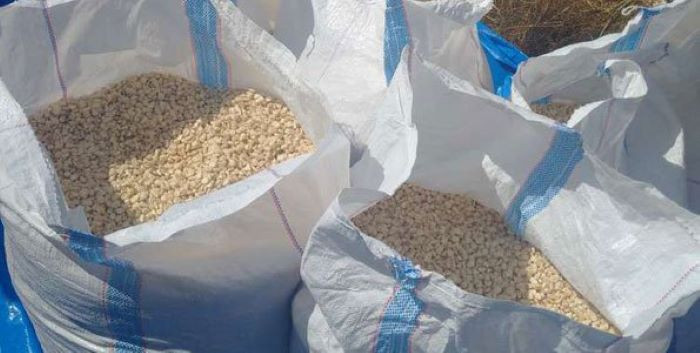
“Long term projects are difficult to implement especially by a (political) party with no foresight and steeped in grandstanding and short-termism like Zanu-PF”, explained Elton Mangoma, the ex-Minister of Energy and Power Development whilst responding to a question in a recent Press interview seeking to know the best plan for Zimbabwe to increase power generation.
The ex-minister stated clearly that Zimbabwe does not have the resources to go it alone and would need investment from outside the country, the BRICS group of countries, of course, included.
The ex-minister further alleged that the price being paid for Greenfuel’s ethanol is extortionist. The agenda for sustainable socio-economic transformation is as good as dead if corruption is not curbed.
To its credit the document recognises the danger of corruption, but does not go into the strategy of tackling it. It is this lack of detail on the actual strategies to attract finance, to be deployed across the board that is the document’s major weakness.
The document, which of course is an agenda recognises this and places the burden, perhaps rightly, but unkindly so, on the rather narrow, if not entirely absent shoulders of the Ministry of Finance and Economic Development. The danger is that the grand standing and short termism Mangoma alludes to, may make a desperate Treasury acquiesce to unreasonable demands such as raising tariffs and the issuing of import licenses through the re-introduction of direct local market allocation, and inadvertently, the attendant corruption.
With ZimAsset having been oversold, ill funded Treasury’s hands are shackled as regards funding capital projects. Public Private Partnerships, with a few exceptions, being inherently long term projects, usually take time to structure and conclude. They may also require expertise in, and application of what economists call “Game Theory” if government is not to give away the national silver. The theory is also applicable to resource extraction where government seeks to derive a shareholding based on the “value” of the underlying finite resource. The best way to approach this valuation is through the application of game theory via public open or secret bidding, and not through an arbitrary 51 / 49% declaration. For all we know it could be 15 / 85 or 80 / 20.
Chapter 6 – Funding and Debt Management should be one of the most important in the ZimAsset document. Yet it starts with a fatal variance to the truth: “The Government will mobilise funding from domestic resources which are in abundance and readily available for full exploitation and utilisation,” reads the first sentence.
Indeed resources such as land, iron ore, labour and coal exist in abundance. But funding cannot be “readily” mobilised from these resources. This time lag to mobilise funding alone may be as much as two to four years. Even then, securitisation of untapped mineral resources, modern terminology for another Rudd Concession, is not the way to go.
- Chamisa under fire over US$120K donation
- Mavhunga puts DeMbare into Chibuku quarterfinals
- Pension funds bet on Cabora Bassa oilfields
- Councils defy govt fire tender directive
Keep Reading
That apart wrong assumptions lead to wrong strategies, such as the creation of a Sovereign Wealth Fund. It is like advising a beggar to open a long term savings account.
Indeed in the same paragraph, to confirm its beggar status, government commits itself to “continue collaborating with all development partners that have been tendering technical and financial assistance to different sectors of the economy”.
Tellingly, the chapter dedicated to funding ignores foreign direct investment (FDI) as a source of funding. Strategies to attract FDI would have given some life to the document. Just mentioning the creation of special economic zones is not enough. Without credible sources of funding, especially credible strategies to woo foreign capital, the document remains a wish list.
The hope is that in his budget the minister will start addressing some of these shortcomings of ZimAsset. Attractive incentives must be minted for sizeable FDI for all sectors of the economy in particular the financial sector, infrastructure, agriculture and mining.
It may be important and game changing, to now commit the next election preparation and their holding, which may have to come earlier than 2018, to the UN. The CCJP’s report on the elections vindicates the so called enemies of Zimbabwe. Finally, another major weakness of the document is that it tries to be all things to all ministries. A focused approach would have narrowed down to a few key industries and initiatives in a five year plan, post political landscape and international relations detoxification, such as:
- Taking Energy generation to 4000 MW;
- Monetary union with RSA or SADC within two years;
- Raising NRZ installed capacity to 100 million tonnes by year five
- Raising platinum output to a million ounces and commissioning the PGM refinery by year five.
- Exporting at least 30 million tonnes of Coal by the fifth year
- Exporting at least 20 million tonnes of Steel and thirty million tonnes of iron ore by year five
- Getting hundred thousand hectares under drip irrigation and another hundred thousand hectares under overhead irrigation by the end of the period
Technocrats would need to estimate the capital requirement of this limited list of projects before the document becomes a blue print for engaging equity technical partners and other financiers. The project too, requires co-ordination with neighbouring countries for the provision of rail and port infrastructure.
It goes without saying that legacy issues on land reform and the perception of the absence of the rule of law need to be addressed as they are the ones holding back the country’s progress and quest for FDI.











